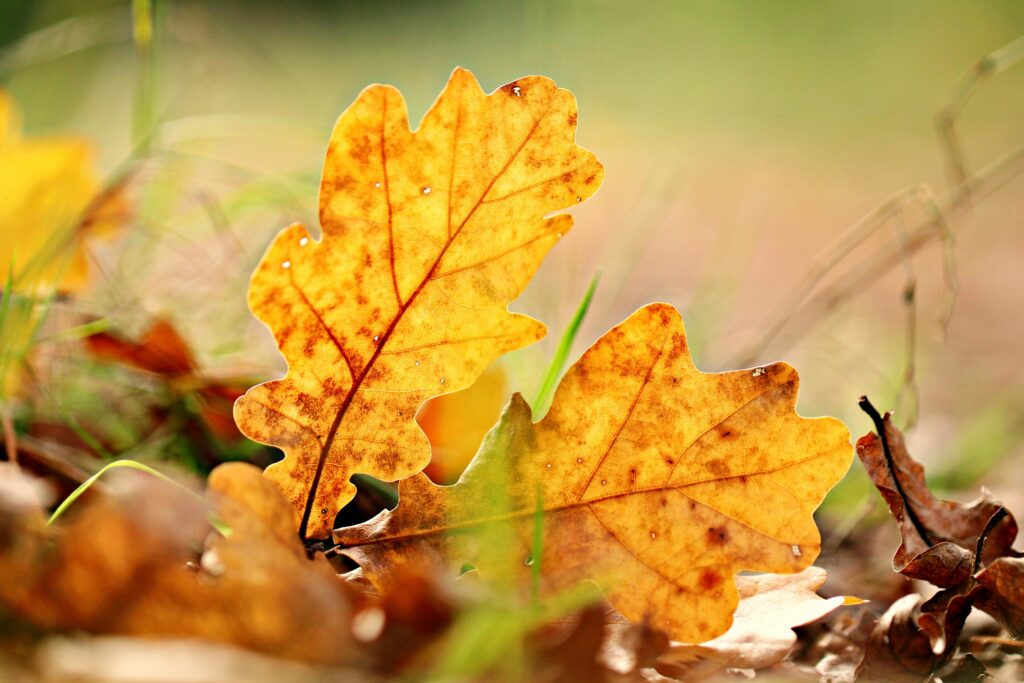
oak leaf
An oak leaf is far from just an ordinary piece of nature. That is why positioning the performers as symbols of strength, endurance, and wisdom has been around different times, cultures, and continents. As the leaves of the majestic oaks, oftentimes an oak can live 500 years or more; beyond mythology and folklore, oak leaves feature in medicine, in art, and even in modern fashion. Therefore, it is only logical that people seek new meanings and uses for the oak leaf. This article, therefore, touches on the history and symbolism and discusses contemporary relevance of the oak leaf, weaving together interesting facts regarding this simple yet potent natural form that touches human existence.
The Oak Tree and Its Leaf: A Natural Wonder
The oak itself is a myth.Respected for its height and longevity across Europe, North America, and Asia, the oak tree bears unique, lobed leaves that give it a distinct identity. In autumn, these leaves turn crimson, orange, and brown before carpeting the forest floor, reminding us of nature’s cycle of renewal.
The oak leaf is crucial to the ecosystem. It is food for insects, small creatures, and even fungi; it is shelter for these organisms. Once fallen, leaves decompose, fertilizing the soil for their offspring to come forth. Thus, symbols of life and life itself exist in the oak leaf.
Symbolism of the Oak Leaf Across Cultures
All the world over, oak leaves have borne much symbolical significance for thousands of years. Roman soldiers crowned with oak leaf wreaths and marched proudly down the streets signifying honor, valor, and civic responsibility. In Celtic lore, people regarded the oak tree as sacred and saw its leaves as channels for divine wisdom. Druids used oak leaves in ceremonies, considering them creatively charged.
In heraldry, people use the oak leaf as an important symbol, attributing strength, endurance, and steadfastness to it, and often placing it alongside skulls and crossbones on family crests, military insignias, and coats of arms. In the United States, the oak leaf finds its way into military decorations like the oak leaf cluster, which shows receipt of multiple awards of the same decoration.
Another fascinating connection of the oak leaf is with immortality. Because an oak tree lives for centuries, its leaves have come to symbolize long life and continuation. Though leaves fall in autumn, they come back in spring, teaching us about endurance and renewal.
Medicinal and Practical Uses of the Oak Leaf
Since time immemorial, people have used oak leaves in traditional medicine. In folklore, some boiled oak leaves to prepare poultices for wounds, sores, and skin irritations. They believed tannin relaxed the body and countered inflammation and infections. Even today, herbalists value oak leaves as a natural therapy and continue to use them for their astringent qualities.
Oak leaves also had an economic utility. In some countryside areas, dried leaves were sometimes used as litter for domestic animals for warmth and insulation. These leaves were appreciated by farmers as good natural fertilizers for their fields. Even today, gardeners gather fallen oak leaves to use as mulch to shelter plants over cold winters.

Oak Leaf in Literature and Art
From historians to poets and artists, it has remained an inflaming source of inspirations. In literature, the oak leaf is usually a symbol of strength, endurance, and natural beauty. The leaf held a special meaning for the romantic poets as it was associated with the cycles of life and was used as a metaphor for human resilience in the face of hardship.
In art, the oak leaf makes countless appearances in designs ranging from medieval manuscript illuminations to logos bristling with modernity. Recognizable to the eye due to its distinctive shape, some columns also support an idea that it will never go out of style because of its great depth in symbolism. Whether it is carved into wood, painted on a canvas, or stitched into a fabric, the oak leaf is a symbol of eternity and style.
The Oak Leaf in Modern Fashion and Lifestyle
In the past few years, the oak leaf has gained popularity with fashion designers and jewelers, among other industries. Designers often back oak leaf motifs on patterns of clothing, scarves, and other accessories to communicate natural beauty and strength. Oak leaf pendent jewelry set in silver or gold is rich in tradition yet still melds with contemporary fashion.
The home décor trends are also replete with prints of oak leaves, wall art, and seasonal decorations. During the fall, oak leaf garlands and wreaths adorn homes, instilling a sense of warmth and coziness. Eco-conscious designers also look into using real pressed oak leaves in some of their sustainable art projects.
Oak Leaf in Environmental Awareness
The oak leaf has also been utilized as a symbol for environmental consciousness. As people gain awareness about the importance of saving forests, the oak leaf is seen as an emblem or logo by conservation groups. The oak leaf symbolizes both the oak tree and the larger struggle for the conservation of natural biomes.
In these educational programs, the oak leaf is used to teach children about biodiversity, sustainability, and ecology. By using something so simple and tangible as a leaf, these programs attempt to create a connection for the younger generation to larger matters of the environment.
The Oak Leaf as a Personal Symbol
There are several things that may come to mind for someone on contemplating the oak leaves. For some, it may simply be a reminder of their familial roots-a connection to heritage and ancestral lineage. Others, however, take it to be a symbol of strength: They sport it as a tattoo or wear it as jewelry with pride. Since the oak leaf is symbolic of endurance and resilience, it touches the heart of anyone who has undergone hardships.
For the spiritual type, too, there exists a special meaning behind the oak leaf. They believe it stands for the cycle of life-birth, growth, death, and rebirth. Meditating on the oak leaf imparts an immense connection to the wisdom of Nature and the strength of the oak itself. click here
Seasonal Beauty of the Oak Leaf
Oak leaves entrancingly change their colors with the seasons. Spring usually marks the appearance of young oak leaves with bright green colors, tender and fresh with life. By summer, they are full-grown, hardy, and broad, giving shade and shelter. In the fall, they take fiery colors, one of nature’s stunning views. And in the winter, they start falling but still remind us that life will resume.
The seasonal cycle is like the phases of a human life- youth, maturity, decline, and renewal-the oak leaf thus symbolizes the shared journey of time that mankind undergoes.
The Enduring Power of the Oak Leaf
For thousands of years, and even in contemporary life, artists and scientists alike have kept the oak leaf relevant through symbolic representations. Practically and aesthetically, the oak leafs give us symbols of strength, wisdom, and endurance. In the wild, in a piece of art, or simply as a personal symbol, the oak leaf ties us to the eternal vitality of Mother Nature.
As environmental consciousness grows, the oak leaf stands as a reminder to preserve nature’s strength and beauty. The next time you see one, pause to reflect on its past, its meaning, and its timeless bond with humanity.





